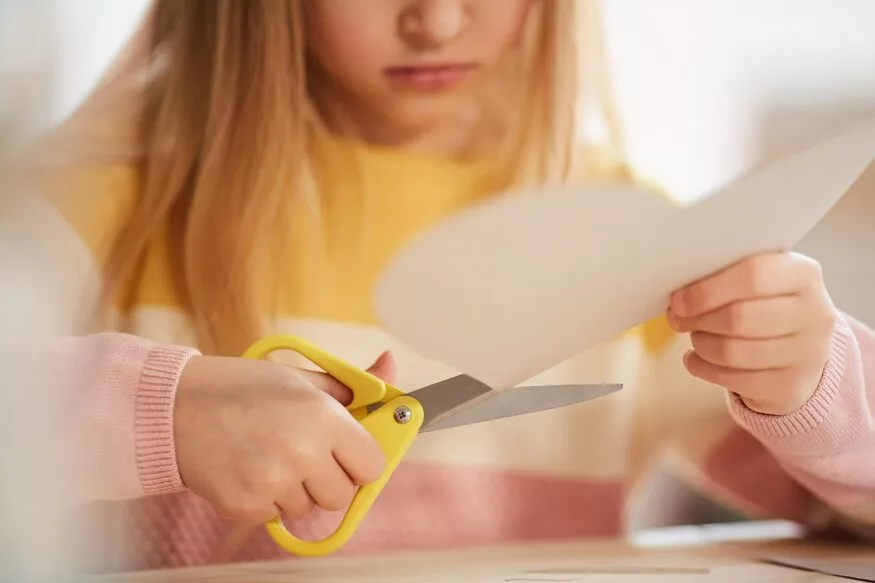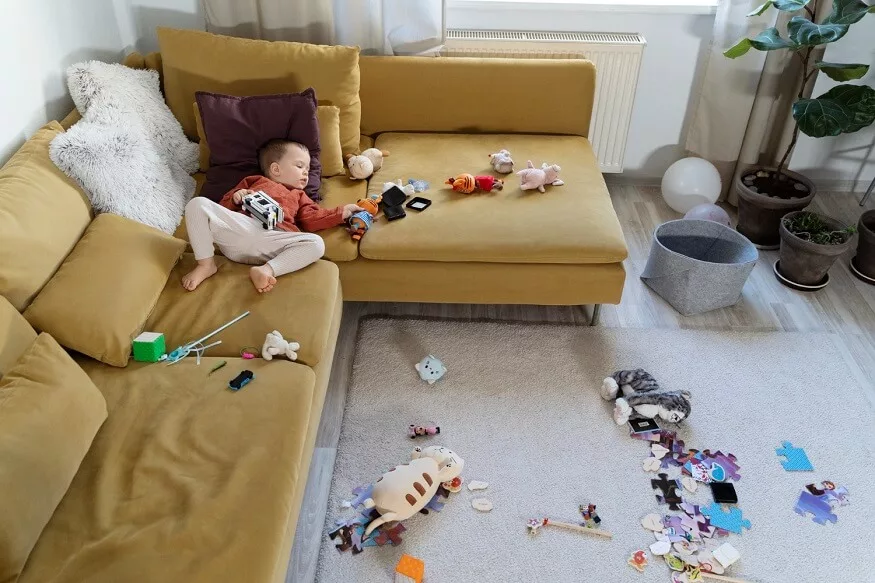Scissor skills is a development milestone that not only showcases a child’s physical dexterity but also plays a significant role in their cognitive and creative development. As parents, understanding when and how to introduce scissors to our little ones is crucial. In this article, we delve into the fascinating world of scissors for children, unravelling the timeline of this developmental journey and discovering the profound impact it has on a child’s early years.
The Early Years
Early childhood is a period of rapid growth and exploration, marked by various developmental milestones. As toddlers transition into preschoolers, their fine motor skills become increasingly refined. These skills lay the groundwork for more complex tasks, including the use of scissors. Fine motor skills involve the coordination of small muscle movements, particularly those in the hands and fingers, and are essential for activities such as writing, drawing, and, of course, cutting with scissors.
Understanding the Right Time
The question on many parents’ minds is, “When can my child use scissors?” The answer lies in recognising the readiness signs that indicate a child’s motor skills have reached a level where they can safely handle this tool. Typically, around the age of 2 to 3 years old, children start showing an interest in holding objects with a pincer grasp – a key precursor to scissor skills. This is when parents can introduce child-safe scissors designed specifically for little hands.
Child-Safe Scissors: The Journey of Scissor Skills
Before delving into the world of scissor skills, it’s paramount to invest in child-safe scissors. These specially designed tools prioritise safety, featuring blunt tips and often a spring mechanism to assist in opening the blades. Equipping your child with the right tools ensures a positive and secure introduction to scissor activities.
Exploration and Familiarisation (Ages 2-3):
As toddlers express interest in holding objects with a pincer grasp, this is an opportune time to introduce them to the concept of scissors. Begin with child-friendly, safety scissors made from durable, non-toxic materials. Encourage exploration by allowing them to cut through soft materials like playdough or lightweight paper. Supervision is crucial at this stage to ensure safe handling.
Developing Control and Precision (Ages 3-4)
As children progress into the preschool years, their fine motor skills continue to refine. At this stage, they can start practising more controlled cutting on thicker paper or cardboard. Engage them in simple cutting exercises, such as following straight lines or basic shapes. This not only hones their scissor skills but also fosters hand-eye coordination.
Building Complexity (Ages 4-5)
By the age of 4 or 5, children can tackle more intricate cutting tasks. Introduce them to the world of cutting along curved lines and shapes. Craft activities that involve creating collages or cutting out pictures from magazines enhance their spatial awareness and creativity. As their confidence grows, children will begin to experiment with cutting various materials.
Refinement and Mastery (Ages 5 and Beyond)
As children approach the age of 5 and beyond, they are likely to exhibit a higher level of scissor proficiency. This is an opportune time to introduce more advanced cutting projects, such as cutting out simple patterns or intricate designs. Engaging in arts and crafts that require precise cutting not only refines their scissor skills but also nurtures their creativity.
The Cognitive Benefits of Scissor Skills
Beyond the physical aspect, the development of scissor skills offers a myriad of cognitive benefits for children. These include:
- Hand-Eye Coordination: The act of cutting involves a coordinated effort between the eyes and hands. As children manipulate the scissors to follow lines or shapes, they enhance their hand-eye coordination, a skill crucial for various activities in their academic and daily lives.
- Spatial Awareness: Scissor activities require an understanding of spatial relationships. Cutting along lines or shapes fosters spatial awareness as children learn to navigate and manipulate the scissors in relation to the paper or material they are cutting.
- Creativity and Imagination: Engaging in scissor-related crafts encourages creativity and imagination. Whether it’s cutting out shapes to create a collage or fashioning their own paper sculptures, children are given the opportunity to express themselves artistically.
- Problem-Solving Skills: Cutting out specific shapes or following intricate patterns challenges children’s problem-solving skills. As they navigate the complexities of cutting, they develop the ability to strategise and overcome challenges – a valuable skill that extends beyond the realm of arts and crafts.
Parental Involvement and Support
Throughout this developmental journey, parental involvement is paramount. As children embark on their scissor skills exploration, they benefit greatly from the guidance and support of their parents. Here are some tips for fostering a positive scissor experience:
- Supervision: Always supervise scissor activities, especially in the early stages of exploration. Ensure that your child is using child-safe scissors and provide gentle guidance on proper handling.
- Encouragement: Positive reinforcement goes a long way in building a child’s confidence. Praise their efforts, celebrate their achievements, and encourage them to persevere through challenges.
- Gradual Progression: Allow your child to progress at their own pace. Gradually introduce more complex cutting tasks as they demonstrate increased control and precision. Avoid rushing the process, focusing instead on the joy of learning and exploration.
- Creativity Unleashed: Use scissor activities as a platform for creativity. Incorporate cutting into various arts and crafts projects, providing opportunities for your child to experiment, create, and express themselves.
In the symphony of a child’s development, scissor skills play a distinctive and melodious tune. From the early exploration of holding child-safe scissors to the refined mastery of intricate cutting tasks, the journey is a testament to a child’s growing abilities. As parents, we play the role of conductors, guiding and supporting our little ones as they navigate the intricate notes of scissor skills.
Through careful attention, encouragement, and a sprinkle of creativity, EuroSchool helps our children weave a masterpiece of developmental achievements that will resonate throughout their lives. So, when can your child use scissors? The answer lies in the delicate balance of readiness, exploration, and the nurturing hands of a supportive parent.










